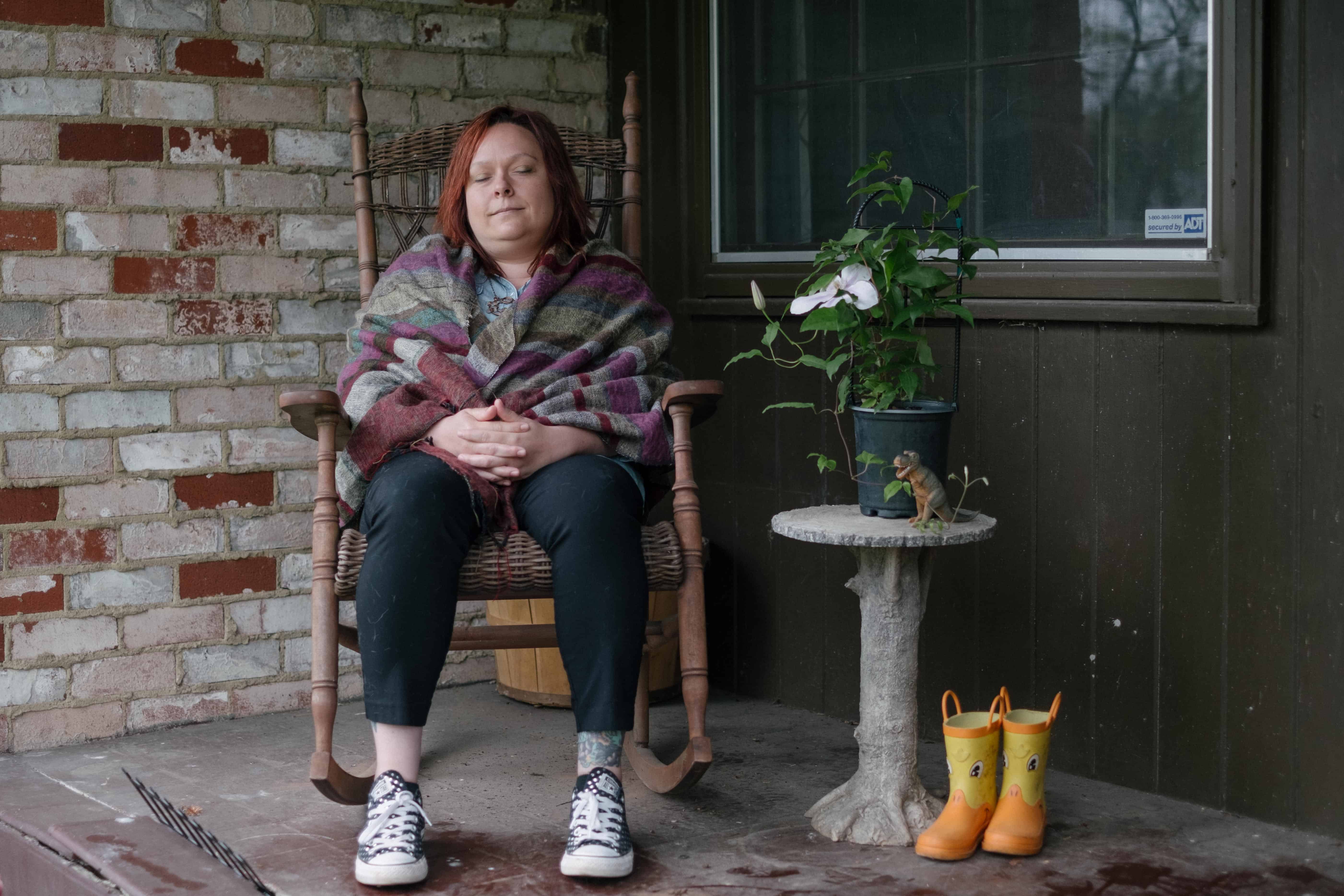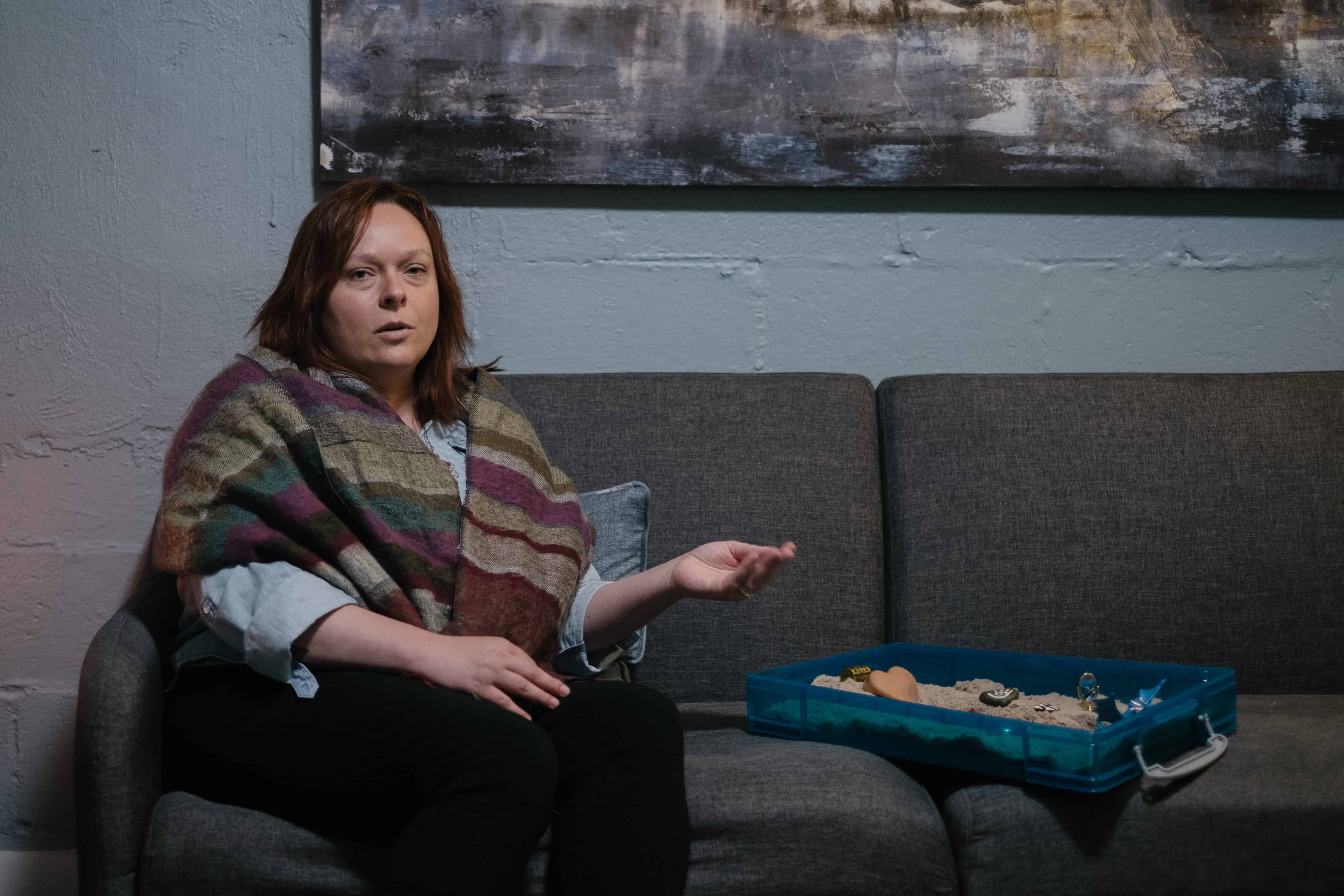When were you first exposed to dharma?
My first exposure to dharma was during my undergraduate studies majoring in Philosophy/Asian Studies. However, this didn’t translate to a personal practice until a few years later when I lost two friends to suicide in a six-month period. The bereavement related to their deaths was so overwhelming that it forced me to seek out additional community and support. Around that time I was also reading a book by a person who found healing through meditation and was miserable enough to be willing to try it out. I initially started meditating hoping that I would learn how to stop thinking, stop feeling and disconnect from other people- aversion at it’s finest! However, the first time I fully knew impermanence, on the cushion, I experienced a huge sense of relief- relief from the burden of self, relief from the need to control, relief from the need to know and be certain about everything. When I started a meditation practice, I was in early recovery from substance abuse. Now, with over 12 years of practice and almost 17 years of sobriety I can’t imagine my life without the hope and support provided by the dharma.
How has the path manifest in your daily experience?
My professional life is built around bodhisattva vows. I work as a trauma therapist in private practice- my office is at the meditation center, am enrolled as a full-time student in a psychiatric nurse practitioner program at Vanderbilt University and also manage the daily operations of the meditation center. Helping people heal, find freedom from the wounds of the past, and befriend their internal experience is at the heart of what I do. One of the primary therapy modalities I use in my practice is called sandplay therapy- the client and I use miniatures/symbolic small toys to work through internal conflicts; I pair this with meditation in sessions. The miniatures represent all of the unknown parts of the experience as well as all of the possibilities available when we grow our awareness. I have about 500 miniatures in the office, some arrangement of them would probably make an interesting photograph.
In addition to professional work, I feel most grounded, connected and effortlessly mindful when I’m in nature. I often meditate on my back deck and take great pleasure in gardening.
Who is your teacher(s)?
Scott Tusa, Dave Smith
how long/often do you meditate?
Vipassana style meditation 3-4 days per week, facilitating groups at the meditation center bi weekly, teaching mindfulness to clients in my therapy practice, biweekly mentoring sessions with my teacher, interpersonal mindfulness in close relationships.
Which sangha do you normally attend?
What is your primary profession?
Mental health counselor.
Was there an experience in your life where you realize the profound power of the practice?
Twelve years of practice has helped me thrive in spite of numerous deaths of clients, friends and family members from mental health and substance abuse problems. More importantly, thought, it’s given me freedom from my doubting mind, making it possible to be present for the full range of emotions including joy.
Background
Rachel’s journey into the world of Dharma was a winding path marked by academic pursuits and personal struggles. Beginning with a teenage initiation into meditation outside the Buddhist tradition, she delved into philosophy and Asian studies during her undergraduate years, focusing on Chinese history and language. Despite her academic engagement, her spiritual practice remained separate at that time.
In her twenties, Rachel faced the challenges of active addiction, but after graduating in 2002, she embraced sobriety and embarked on a twelve-step recovery program with a significant spiritual component. Overcoming the difficulties she experienced with spirituality in her teenage and early adult years, Rachel engaged in a lengthy process of self-discovery.
In 2006, tragedy struck when two friends committed suicide. This event prompted Rachel to explore meditation as a means of coping, inspired in part by the writings of dharma punk Noah Levine. Her therapist supported this exploration, recognizing the potential benefits for navigating complex bereavement. Rachel initially approached meditation with the aim of escaping from thoughts and emotions, but the irony was evident as she discovered that meditation, in fact, facilitated a healthier relationship with her thoughts and emotions while fostering connection with others.
In Nashville, Rachel found a meditation group at the bottom of a Tibetan Buddhist center, where she began her practice. Despite her initial misperceptions about the purpose of meditation, the group embraced her, and she experienced the transformative effects of meditation on her grieving process. The group’s members, affiliated with Against the Stream Nashville, guided Rachel through her practice, introducing her to Dave Smith, who became her teacher for the following years.
Dave’s perspective, rooted in a mental health framework with a touch of recovery, resonated with Rachel, leading her practice in a new direction. This marked a shift towards a holistic approach that integrated mindfulness with mental health considerations. Rachel’s evolving journey reflected the unexpected twists of life and the transformative power of meditation in navigating personal challenges and growth.
Integration
Rachel reflects on the integration of her meditation practice into various aspects of her life beyond the cushion. Recognizing that the practice extends beyond a few hours per week, she emphasizes that the key lies in the continuous engagement with the practice rather than its duration. Initially drawn to meditation for mental health and recovery reasons, Rachel found immediate benefits in working through significant grief, complementing her twelve-step recovery practice.
Her early meditation practices primarily focused on tranquility and concentration, but a shift occurred when she started sitting with Dave, who emphasized heart practices like Brahmavihara. Despite finding these practices challenging for about three years, Rachel navigated internal resistance and confusion, witnessing a tangible impact on her overall life.
The promise of recovery—being happy, joyous, and free—became not just a concept but a lived experience for Rachel. Meditation played a crucial role in transforming her from a traditionally anxious and high-strung person to someone who experiences a sense of relaxation. As she became more at ease in her physical body, this newfound well-being began to permeate her relationships with others, illustrating the far-reaching effects of her meditation journey.
Parenting
Rachel’s meditation practice took a significant turn when she became a parent four years ago, experiencing both changes in her formal sitting practice and profound shifts in her internal experience. Married for a long time, she and her husband faced fertility challenges in their thirties, undergoing unsuccessful treatments. In the midst of what she thought was a grieving process during a retreat in Joshua Tree, Rachel decided to change jobs and focus more on community and creating meaning in her life.
Surprisingly, within three months of changing jobs, Rachel discovered she was pregnant, marking a transformative chapter in her life. The arrival of her son drastically altered her formal sitting practice, making access to maternal love and presence more effortless. This shift served as a healing experience emotionally, physically, and cognitively.
Parenthood also brought about logistical changes to her meditation routine, with the needs of her child taking precedence. Adapting to the new reality of parenting, Rachel found herself sitting in various locations, including her kid’s room, front porch, back porch, or even at work during lunch breaks. Despite the logistical adjustments, heart practice, which was once challenging, became a relieving experience.
Now at 40, Rachel reflects on the overall ease she feels in herself and in her body, attributing it to a combination of factors—middle age, long-term practice, and recovery. She expresses a sense of liberation from neurotic tendencies that characterized her twenties, thanking the Dharma for the positive transformation in her life.
Professional Impact
In her dual commitment to both Dharma practice and clinical work, Rachel’s journey took a significant turn when she transitioned from substance use counseling to trauma work about five or six years into her clinical practice. Drawing from her own experience as a person in recovery, she found purpose in helping survivors of sexual abuse and trafficking, recognizing the importance of maintaining a broader perspective in the face of darkness and suffering.
Rachel was mindful of the potential for burnout and cynicism among therapists engaged in trauma work and was determined to avoid such pitfalls. Having already integrated secular mindfulness into her clinical practice, she sought to bring her spiritual beliefs more explicitly into her workspace. The therapeutic intervention she employs, Eye Movement Desensitization and Reprocessing (EMDR), aligns closely with her Dharma practice. For her, EMDR is a means of helping individuals break free from the emotional bonds and stories associated with traumatic experiences, aligning with the Dharma’s emphasis on liberation.
Rachel’s exposure to increasingly challenging clinical cases underscored the importance of relying on the Dharma as a source of compassion. She challenges the notion of compassion as a fatigue-able resource, distinguishing it from empathy. As someone committed to a long-term career in mental health services, Rachel sees burnout prevention as a moral imperative, emphasizing the significance of her compassion and heart practices in sustaining her commitment to the field.
Deepening
Rachel, a practitioner of the Dharma for the past eight or nine years, finds herself at a pivotal moment in her journey. At 40, she made a bold decision to leave a fulfilling job and return to school to become a psychiatric nurse practitioner, driven by a deep sense of urgency to address the opioid epidemic and increase access to mental health care services.
Her work at a trauma treatment center, where she encountered the grief-stricken parents of clients who died from overdoses and suicides, profoundly impacted her. Witnessing the needless deaths in the midst of the opioid epidemic fueled Rachel’s determination to contribute to psychiatric services, viewing it as an extension of her spiritual values.
The poignant stories of grief, particularly a mother’s shame and isolation, have motivated Rachel to deepen her practice. She sees her professional role as an expression of her spiritual values and aims to be more solid in her practice, enabling her to connect deeply with those in pain without being personally consumed by it.
Rachel acknowledges a shift in her practice, moving from a more traditional approach to exploring a body-based somatic practice. Despite initially being less drawn to rituals and religious aspects, she now finds herself gravitating towards a more religious Buddhist perspective. Seeking a sense of ease and well-being, she has started mentoring with someone from the Tibetan tradition to explore specific practices that tap into the somatic sense of joy and connectedness, recognizing that the shift she seeks is not just intellectual but embodied, from the neck down.














































































